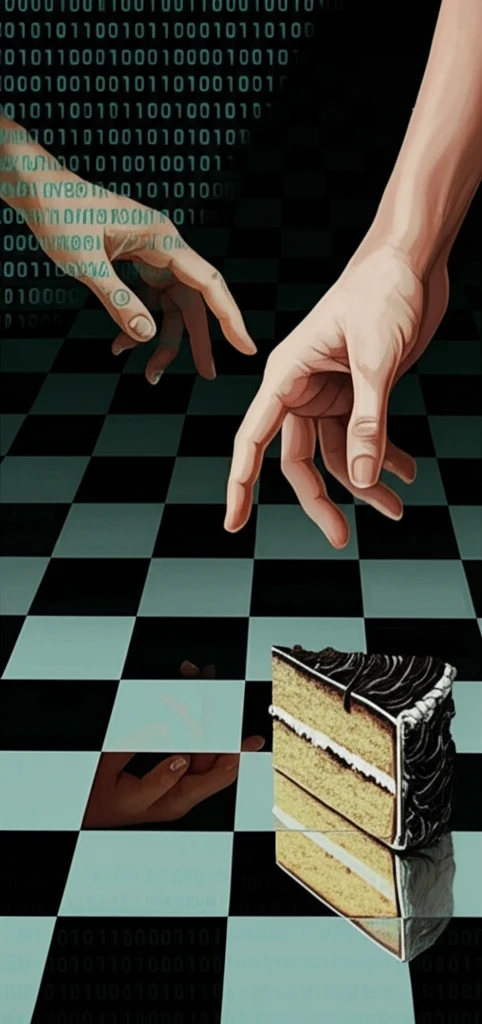
The Dessert Duel: Can You Really Master the Art of Fair Cake Cutting?
"Uncover the surprising strategies and hidden vulnerabilities in repeated cake cutting, and how to secure your 'fair' share in resource division."
Cake cutting, a seemingly simple method for dividing a resource, has deep roots in mathematics, economics, and computer science. It's more than just slicing a cake; it's a model for fairly allocating everything from land and time to computational resources and even greenhouse gas emissions. Traditional cake cutting focuses on single instances, but the real world often demands repeated divisions, adding layers of complexity and strategy.
Imagine two players, Alice and Bob, repeatedly dividing cakes. Each round, Alice cuts, and Bob chooses which piece he wants, leaving the remainder for Alice. This scenario, known as repeated cake cutting, introduces dynamics beyond simple fairness. Can Alice learn to anticipate Bob's choices and cut the cake to her advantage? Can Bob protect himself from being exploited? This seemingly simple game reveals intricate strategies and surprising vulnerabilities.
The concept of repeated fair division was first explored by Aumann and Maschler. Now, recent research delves deeper, uncovering how players can exploit predictable behavior, achieve equitable outcomes, and navigate the game using learning strategies. This article explores these findings, revealing the hidden depths of a game that seems as straightforward as slicing a cake.
How to Exploit Predictable Behavior in Cake Cutting?

One of the most intriguing findings is the vulnerability of a player who consistently chooses their favorite piece. This myopic behavior, as it's called, can be exploited. Imagine Bob, consistently grabbing the larger piece. Alice can then use a strategy akin to a binary search, gradually refining her cuts to pinpoint Bob's preferences. Over time, this allows Alice to secure a disproportionate share of the cake.
- The Binary Search Strategy: Alice gradually refines her cuts, narrowing down Bob's preferred region of the cake.
- Myopic Behavior: Bob consistently choosing his favorite piece makes him vulnerable.
- Information Advantage: Alice leverages observed choices to predict future preferences.
The Future of Fair Division
The study of repeated cake cutting opens doors to understanding fairness, strategy, and learning in resource allocation. As technology increasingly mediates our interactions, designing algorithms that promote equitable outcomes becomes ever more critical. From splitting computational power to negotiating climate agreements, the lessons learned from this seemingly simple game offer insights into building a more just and cooperative world. Further research promises to explore more complex scenarios, including strategic manipulation, dynamic preferences, and the role of information in shaping fair outcomes.
